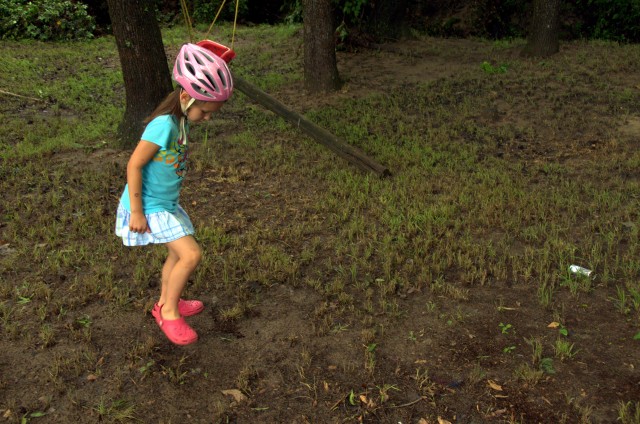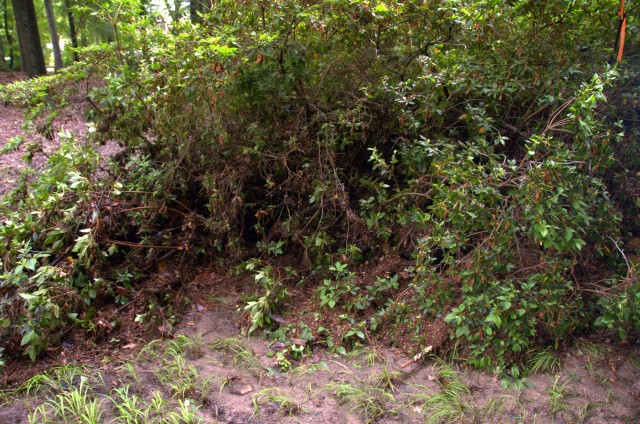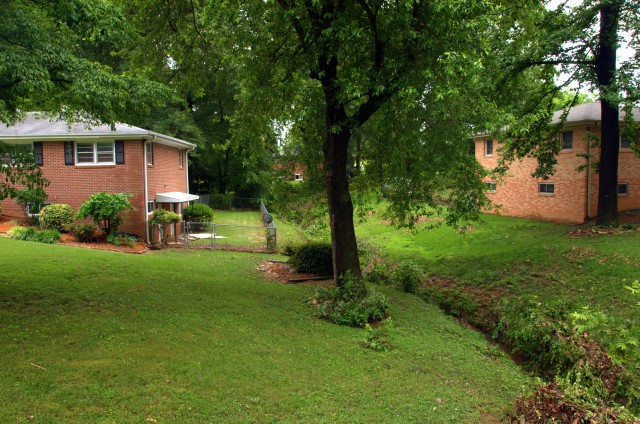We head down to our once-lake-front and take a look at what thousands of gallons of water flowing over a small area in a few minutes can do.
Mud, sand, limbs, leaves, cans — this is what it looks like after a flood.
Plants destroyed, swings caked in muck, belongings strewn through neighbors’ yards. I can only imagine what a real flood would be like.
We go out into the neighborhood, checking on what gifts others received, eventually heading over a couple of streets to a house we’d looked at when we were house hunting. It had been love at first sight. The yard was magnificent; the kitchen/dining area was open yet homey, almost cozy, with a fireplace in the corner. The full basement was finished on one half that opened out to a fenced dog run. Yet a friend advised against it: too much cracking in the foundation walls. “It won’t be a problem now,” he said, “but in a few years, it will cost some significant money to fix.”
We were heartbroken.
As we walk through the neighborhood, I remember that on the other side of the dog run was a small creek — a draining stream just like the one that runs behind our house, and so we head over to see. I couldn’t remember how much elevation there was between the drain and the house.
Not enough.
Talking to neighbors across the street who were out in the yard, we learned that the owners had well over a foot of water in their basement, and that the water had risen to just below the bottom of the window on the outside. I suddenly became very thankful for the two or three inches we found welling up through the slab in our basement.


